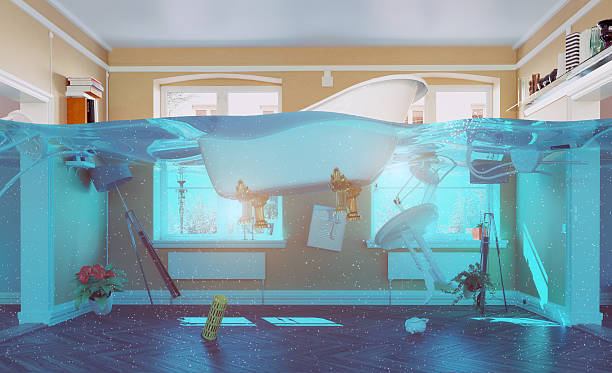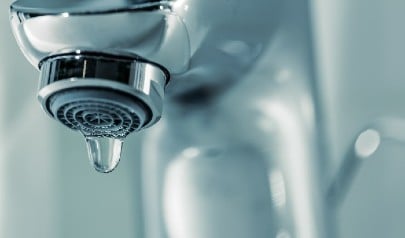Just how to Diagnose a Leaking Bathroom
Just how to Diagnose a Leaking Bathroom
Blog Article
Nearly everybody seems to have his or her own perception in relation to How to Repair and Prevent Bathroom Water Damage?.

Water damage often takes place in the restroom because of the water made use of daily. Occasionally, the damage could be a little mold from the shower. Various other times, it's huge damages on your floor. Whatever it is, it is always great to know the reason as well as stop it before it takes place.
This guide will certainly undergo some of the usual reasons for water damage in the washroom. We will also examine what you can do to stop these reasons from damaging your washroom. Let's dive in.
5 Usual Reasons For Water Damage in Shower Rooms
These are the common factors you would certainly have water damage in your restrooms and also exactly how you can identify them:
Burst or Dripping Pipelines
There are numerous pipelines carrying water to different parts of your bathroom. Some pipes take water to the bathroom, the sink, the taps, the shower, as well as several other areas. They crisscross the small area of the washroom.
Every so often, these pipes can get rustic and also burst. Other times, human activity can cause them to leak. When this takes place, you'll find water in the corners of your shower room or on the wall surface.
To detect this, look out for gurgling wall surfaces, molds, or mildew. Call an expert emergency situation plumber to fix this when it occurs.
Splits in your wall tilesv
Shower room wall ceramic tiles have actually been specially developed for that function. They shield the wall surface from dampness from people taking showers. However, they are not unbreakable.
Occasionally, your restroom wall surface floor tiles split and enable some dampness to permeate right into the wall surface. This could potentially ruin the wall surface if you do not take any type of activity. If you notice a crack on your wall ceramic tiles, fix it right away. Do not wait till it destroys your wall.
Overflowing bathrooms as well as sinks
As people, often we make errors that can create some water damage in the washroom. For example, leaving your sink tap on could trigger overflowing as well as damages to other parts of the restroom with wetness.
Likewise, a malfunctioning bathroom might trigger overflowing. For example, a busted commode manage or various other parts of the tank. When this occurs, it can harm the flooring.
As quickly as you observe an overruning sink or toilet, call a plumber to help deal with it quickly.
Roof covering Leakages
Often, the issue of water damage to the restroom could not come from the restroom. For example, a roof leakage can trigger damage to the restroom ceiling. You can spot the damages done by considering the water spots on the ceiling.
If you find water stains on your ceiling, examine the roofing to see if it's damaged. Then, call a specialist to assist resolve the concern.
Excess Wetness
It's awesome to have that long shower and also sprinkle water while you hem and haw as well as act like you're executing, however sometimes these acts could cause water damage to your washroom.
Sprinkling water around can cause water to head to corners and create molds. Enjoy exactly how you spread out excess wetness around, and when you do it, clean it up to stop damage.
Conclusion
Water damage to your shower room can be bothersome. However, you can manage it if you stop some of the reasons discussed in this overview. Call an expert emergency situation plumbing technician if you notice any type of severe damages.
How to Repair a Water-Damaged Wall in the Bathroom
All you need to know to repair bathroom wall water damage – from identifying the water source to finishing the repair professionally. If you don’t act quickly to resolve a water damage problem, you could find that it develops into a mold issue and/or cause structural damage to your home. Follow this guide to repair your bathroom before it's too late.
All you need to know to repair bathroom wall water damage
Water damage is a common household problem, and one that, if left unrepaired, can quickly lead to structural problems and health issues. The two most likely rooms where water damage may occur is the bathroom and the kitchen – where water is used often and there is high humidity.
What is water damage?
It is easy to think of water damage as caused by a flood or leaking tap or burst water pipe. However, when water damage is assessed, there are three main categories into which water falls (as classified by the American National Standards Institute). These categories are defined as:
Category 1 Water – ‘Clear Water’
This is sanitary water. There is usually no major threat to health by washing with this water, drinking it, or inhaling if it is streaming. Most water that enters your home will be category 1 water, while most water leaving your home will be either category 2 or 3 water. It may also come from melting snow, rainwater and water tanks.
Damage caused by this type of water can usually be repaired or restored, though this doesn’t mean that there are no potential health issues.
Category 2 Water – ‘Grey Water’
This is contaminated water – sometimes considerably so – and will cause illness if consumed or if it comes into contact with your skin. Water damage in this category is often caused by overflows from toilet bowls, and damage to washing machines and dishwashers. While damaged items might still be repaired or restored after damage by grey water, it is more difficult and more expensive to do so.
If the water damage in your home has been caused by grey water, it is advisable to have repairs made by professionals.
Over time, grey water will deteriorate and become black water.
Category 3 Water – ‘Black Water’
Category 3 water, also known as black water, is highly contaminated and a great risk to health. This may contain raw sewage, heavy metals, and other toxic substances. It will smell terrible.
If this is the water that has caused damage in your bathroom, do not touch it. Stop the water flowing if possible, seal the room and call the experts: it really isn’t worth the risk of ill health and disease that could be fatal. It is very unlikely that items can be repaired or restored if they have been damaged by black water.
https://www.porterscleaning.com/blog/how-to-repair-a-water-damaged-wall-in-the-bathroom/

How to Repair a Water-Damaged Wall in the Bathroom
All you need to know to repair bathroom wall water damage – from identifying the water source to finishing the repair professionally. If you don’t act quickly to resolve a water damage problem, you could find that it develops into a mold issue and/or cause structural damage to your home. Follow this guide to repair your bathroom before it's too late.
All you need to know to repair bathroom wall water damage
Water damage is a common household problem, and one that, if left unrepaired, can quickly lead to structural problems and health issues. The two most likely rooms where water damage may occur is the bathroom and the kitchen – where water is used often and there is high humidity.
What is water damage?
It is easy to think of water damage as caused by a flood or leaking tap or burst water pipe. However, when water damage is assessed, there are three main categories into which water falls (as classified by the American National Standards Institute). These categories are defined as:
Category 1 Water – ‘Clear Water’
This is sanitary water. There is usually no major threat to health by washing with this water, drinking it, or inhaling if it is streaming. Most water that enters your home will be category 1 water, while most water leaving your home will be either category 2 or 3 water. It may also come from melting snow, rainwater and water tanks.
Damage caused by this type of water can usually be repaired or restored, though this doesn’t mean that there are no potential health issues.
Category 2 Water – ‘Grey Water’
This is contaminated water – sometimes considerably so – and will cause illness if consumed or if it comes into contact with your skin. Water damage in this category is often caused by overflows from toilet bowls, and damage to washing machines and dishwashers. While damaged items might still be repaired or restored after damage by grey water, it is more difficult and more expensive to do so.
If the water damage in your home has been caused by grey water, it is advisable to have repairs made by professionals.
Over time, grey water will deteriorate and become black water.
Category 3 Water – ‘Black Water’
Category 3 water, also known as black water, is highly contaminated and a great risk to health. This may contain raw sewage, heavy metals, and other toxic substances. It will smell terrible.
If this is the water that has caused damage in your bathroom, do not touch it. Stop the water flowing if possible, seal the room and call the experts: it really isn’t worth the risk of ill health and disease that could be fatal. It is very unlikely that items can be repaired or restored if they have been damaged by black water.
https://www.porterscleaning.com/blog/how-to-repair-a-water-damaged-wall-in-the-bathroom/
I ran across that piece of writing on How to Repair and Prevent Bathroom Water Damage? while browsing on the web. So long as you enjoyed reading our article if you please be sure to share it. Thank you so much for your time invested reading it.
Book Your Service Report this page